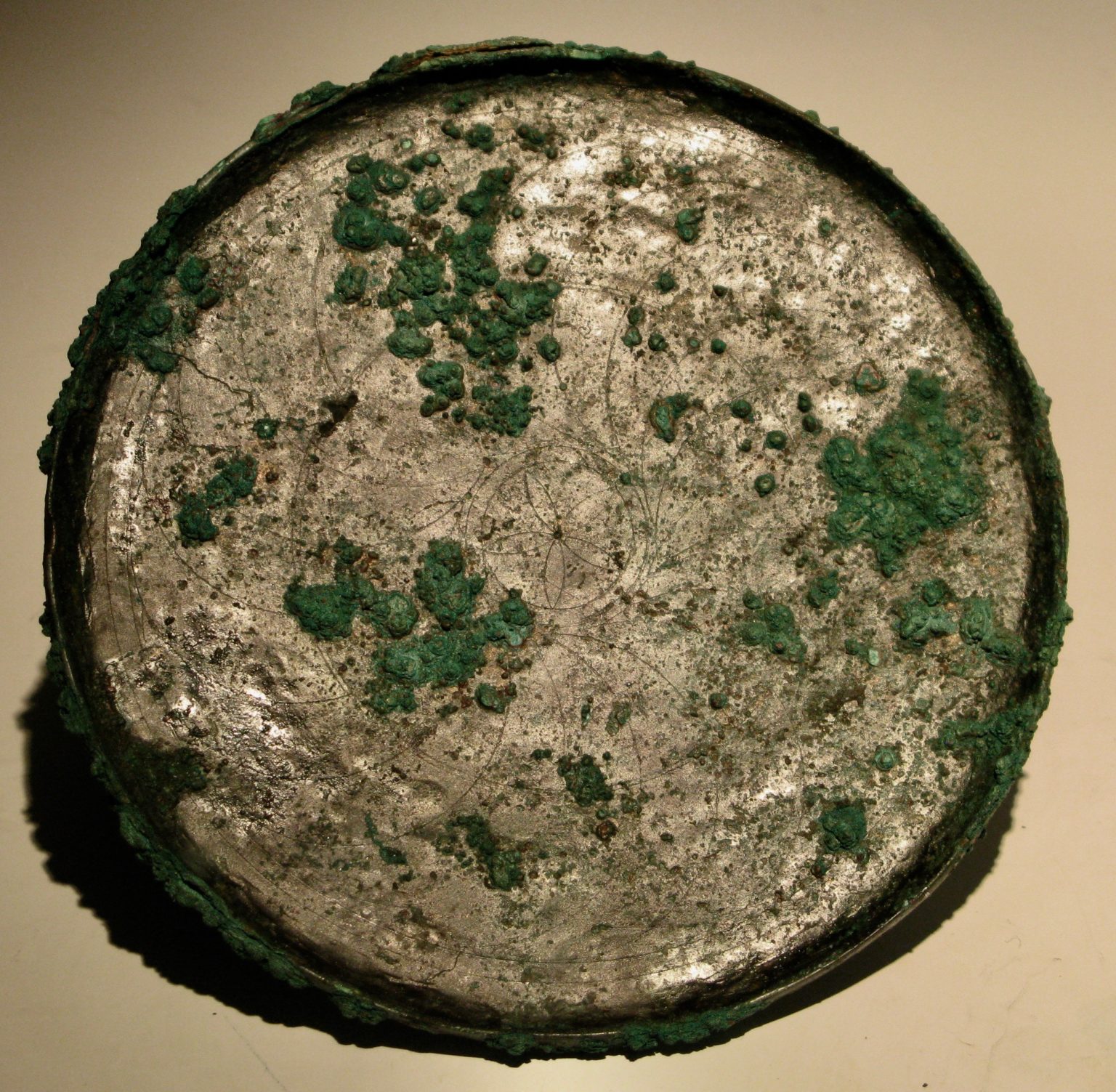The Classical World
The ‘Theano Mirror’
Price: Contact the gallery
Bronze
Greek, 6th century BC
Ø: 15cm
An important and bronze mirror with a slightly raised rim. The main theme of the decoration is in the shape of a five-leaf flower, the geometry of which is based on a regular pentagon inscribed inside a circle. According to the Greek mathematical tradition this was effected by using only a compass and a straight edge, later came to be known as the “Golden Section.” The engraving on our mirror presupposes and necessitates this knowledge, and the use of a metal compass displays great mechanical accuracy. Incised concentric lines and an artfully crafted guilloche band decorate reverse border.
We call it “The Theano Mirror.” For the reason behind our exciting theory, drop us a line and we will would be delighted to discuss!
Condition: Dark green patina with light encrustation, beneath which the bronze core appears. The handle and the handle attachment (gusset) are missing.
Provenance: Formerly priv. coll. Dr. L. M., Zurich, Switzerland.
Said to be found together with our bronze olpe, item CL0109b
Item reference: CL0109a

